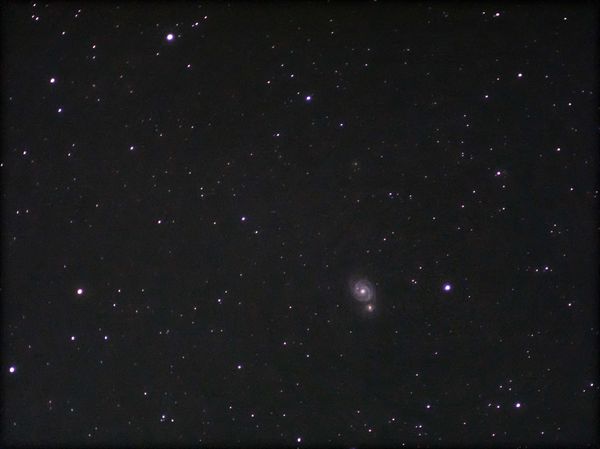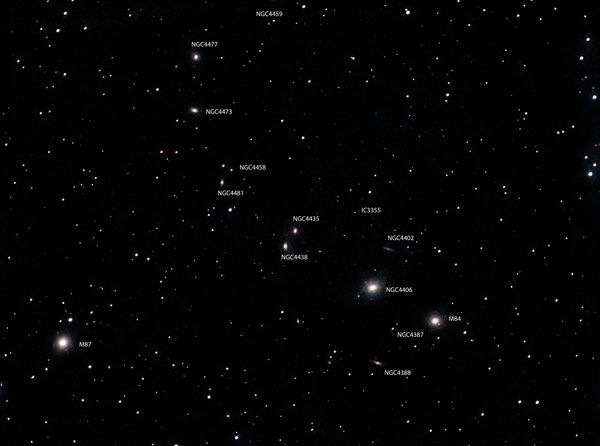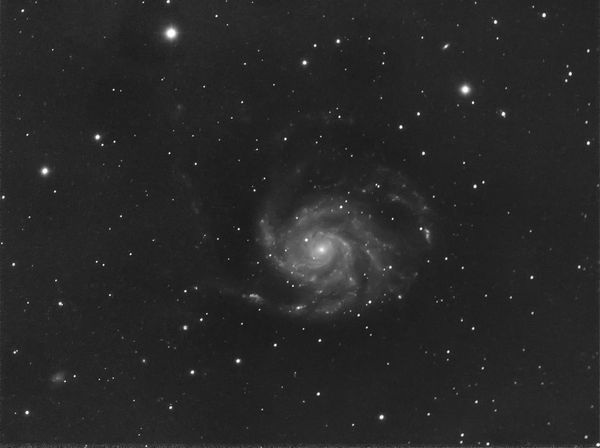Low light/night problems with new Canon 6D
Jun 1, 2017 13:27:46 #
bobwalder wrote:
Just purchased a 6D so getting to know it. I took... (show quote)
Had you used the same lens as they used, you might have achieved the same or possibly better results. It is NOT the camera. I have had great success shooting night sky with my 6D and a 15mm f/2.8
Jun 1, 2017 16:21:34 #
mjmoore17 wrote:
I have found the Canon 6D to be a very good camera for the use that you described. Here is an example of Milky Way with 6D and a Canon 2.8 lens.
Beautiful image. Can you give me the focal length, ISO and exposure details?
Jun 1, 2017 16:23:37 #
JimH123 wrote:
I am adding a picture I took tonight using a 14mm ... (show quote)
Thanks Jim.... can you explain what you mean by "stacking" please? How come such short exposures? Also wouldn't time lapse result in trails or indistinct or even multiple points for each star?
Jun 1, 2017 16:57:51 #
amfoto1 wrote:
I'd guess that 98 out of 100 "camera problems... (show quote)
I like this proposed explanation. Especially about not recording the light painting. I always have LENR turned off, based on others' advice.
I have gotten excellent results with a 16-35 f2.8, good results with a 24mm, and mixed results with a Sigma 20mm f1.4, all wide open, but I really think my problems with the Sigma were focus-related.
Thanks

Jun 1, 2017 18:26:55 #
bobwalder wrote:
Thanks Jim.... can you explain what you mean by "stacking" please? How come such short exposures? Also wouldn't time lapse result in trails or indistinct or even multiple points for each star?
That's the beauty of stacking. It aligns each image so that all the stars line up on top of each other. And I used 4 sec only because I wanted to preserve star colors. When you expose for too long a time, all the bright stars saturate and as saturated stars, they all appear white. If I can expose for a shorter period of time, the color can still be seen. Now the advantages are stacking are that the stars become more distinct and the background appears darker due to an increase in the signal to noise ratio of the image being made up of additional images. But the big thing is that noise goes down too. For any given image, there will be noise. On the next image, there is noise too, but the random placement of the noise means that they noise specs don't line up in exactly the same pixel positions. And as you add more and more images, the image quality goes up as the noise goes down.
To do this stacking, there is a free application called 'DSS' which stands for Deep Sky Stacker. I suggest only downloading from the actual site since there is no guarantee how clean a program is coming from some other URL: http://deepskystacker.free.fr/english/download.htm.
There are a ton of settings in DSS, but the settings all have a default and for the majority of things you might do, the default settings are fine. I also like to add 'Darks' which means that I just capture some additional images with the lens cap on, but same camera settings. What it does now is to locate the stuck at pixels and DSS uses that information to fix the DSS output so that these stuck pixels don't show up in the final result.
After DSS runs, it creates a file called 'autosave.tif'. I don't do any additional adjustment within DSS and go straight to Photoshop to stretch the 'autosave.tif' file. First thing to do is to go to adjustments and change 'mode' from 32-bits to 16-bits. And then I do 'curves' and then 'levels', perhaps over and over until I get the result I want. I also use a plug-in from RC-Astro called XGradient to make the sky be a consistant dark color.
I use version 3.3.4 and find that the next earlier version doesn't support my cameras.
Some of my efforts are done with telescopes, and some with cameras and camera lenses. Just to show that I may use a longer shutter time, I am attaching the results of a stack of 15 + 10 darks using an Olympus em5ii and a 400mm f5.6 old m42 Pentax lens. This gives an effective focal length of 800mm, but is useful to see what focal length is needed to see galaxies. But some are closer and some are farther away, so you see all types. This one is 15 images of 60sec each with ISO 1600.
And just for fun, an image of Markarian's chain which shows a ton of galaxies. With the 400mm lens (effective 800mm), you can see about 15 galaxies, but a bigger scope sees far more.
Finally what can be seen using a telescope. The scope has a longer focal length, and the camera is a CCD camera (Atik Infinity), and you get image #3. This was a 40 sec image stacked 40 times.
Hope this explains a few things.
Jun 1, 2017 18:29:24 #
JimH123 wrote:
That's the beauty of stacking. It aligns each ima... (show quote)
Awesome stuff - thanks Jim
Jun 1, 2017 19:59:50 #
JimH123 wrote:
To do this stacking, there is a free application called 'DSS' which stands for Deep Sky Stacker. I suggest only downloading from the actual site since there is no guarantee how clean a program is coming from some other URL: http://deepskystacker.free.fr/english/download.htm.
To do this stacking, there is a free application called 'DSS' which stands for Deep Sky Stacker. I suggest only downloading from the actual site since there is no guarantee how clean a program is coming from some other URL: http://deepskystacker.free.fr/english/download.htm.
Dammit.... Windows only! :o(
Jun 2, 2017 00:43:09 #
bobwalder wrote:
Dammit.... Windows only! :o(
Went to another product, Sequator, but again, only for Windows: https://sites.google.com/site/sequatorglobal/download
I have another stacker program called Nebulosity. Checked, and it does support Apple: http://www.stark-labs.com/nebulosity.html Not free. $95
It is not as simple to use as DSS and requires marking stars to anchor to in each image so that they line up properly. It does allow for a demo download.
If you want to reply, then register here. Registration is free and your account is created instantly, so you can post right away.





